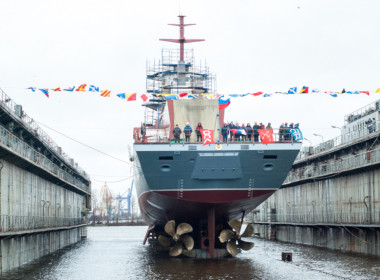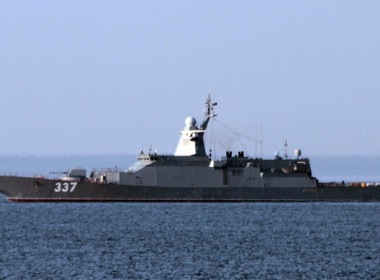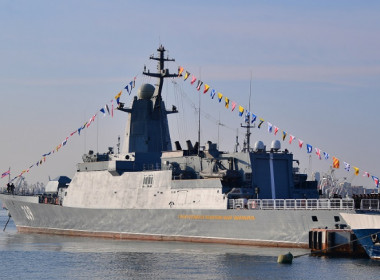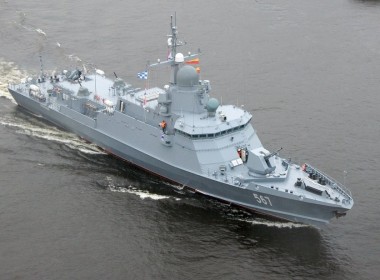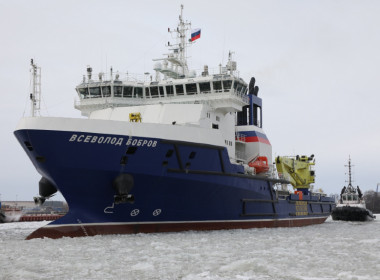VESSEL REVIEW | Merkury – Russian Navy corvette optimised for littoral warfare

Russian shipyard Severnaya Verf recently delivered the Russian Navy’s newest corvette.
Merkury belongs to the Project 20380 series of corvettes, also known as the Steregushchiy-class. Design work was provided by Almaz Central Design Bureau. The Russian Navy plans to acquire at least 30 Project 20380 vessels for assignment to all four of the service’s major fleets, under which these will be used in littoral marine environments. Missions will include anti-submarine warfare, anti-surface warfare, protection of amphibious forces, escort, and patrol.
Merkury has a steel hull, a composite superstructure, a length of 104.5 metres, a beam of 11.6 metres, a draught of 3.7 metres, a displacement of 2,200 tonnes, and accommodations for 90 crewmembers. Low-observable technologies such as radar-absorbent material were incorporated in both the hull and the superstructure to reduce the vessel’s radar signature.
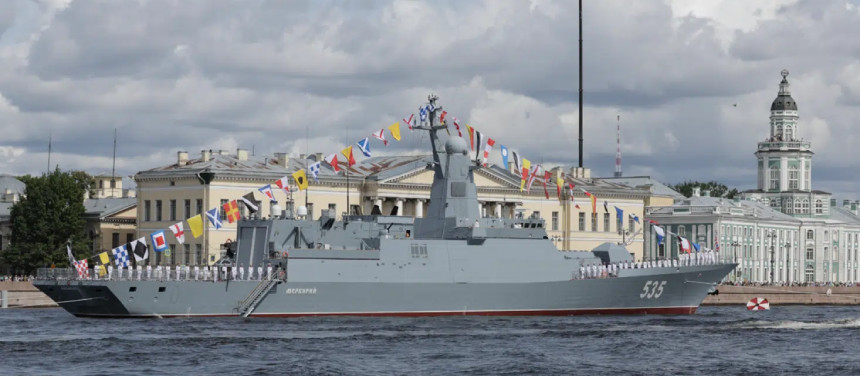
The propulsion setup consists of a combined diesel and diesel (CODAD) arrangement of four Kolomna 16D49 diesel engines that each produce 4,400 kW and are fitted on resilient mounts to reduce noise. The engines deliver a top speed of 27 knots and a range of 4,400 nautical miles at a cruising speed of 14 knots. Four diesel generators meanwhile supply electrical power for the onboard systems.
Armament includes a 100mm naval gun, anti-ship missiles, torpedoes, 30mm close-in weapon systems as point defence against missiles and aircraft, and two 14.5mm manually operated machine guns. The electronics meanwhile include both bow-mounted and towed sonars, air search, surface search and fire control radars, and a combat management system that collates sensor data and provides the crew with enough situational awareness to engage or avoid threats. Four decoy launchers and an electronic countermeasures system help protect against guided missiles.
A flight deck and a hangar are available for use by a Ka-27 helicopter to augment the corvette’s anti-submarine capability.
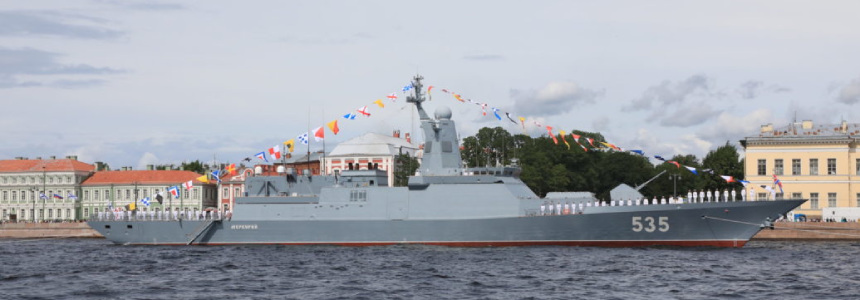
Some of our readers have expressed disquiet at our publication of reviews and articles describing new vessels from Russia. We at Baird Maritime can understand and sympathise with those views. However, despite the behaviour of the country’s leaders, we believe that the maritime world needs to learn of the latest developments in vessel design and construction there.
| Merkury | |
| SPECIFICATIONS | |
| Type of vessel: | Corvette |
| Flag: | Russia |
| Owner: | Russian Navy |
| Designer: | Almaz Central Design Bureau, Russia |
| Builder: | Severnaya Verf, Russia |
| Hull construction material: | Steel |
| Superstructure construction material: | Composite |
| Length overall: | 104.5 metres |
| Beam: | 11.6 metres |
| Draught: | 3.7 metres |
| Displacement: | 2,200 tonnes |
| Main engines: | 4 x Kolomna 16D49, each 4,400 kW |
| Generators: | 4 |
| Maximum speed: | 27 knots |
| Cruising speed: | 14 knots |
| Range: | 4,400 nautical miles |
| Other electronics: | Combat management system; electronic countermeasures system |
| Armaments: | 100mm naval gun; anti-ship missiles; torpedoes; 30mm close-in weapon systems; 2 x 14.5mm machine guns |
| Other equipment installed: | 4 x decoy launchers; helicopter deck; hangar |
| Type of fuel: | Diesel |
| Crew: | 90 |



